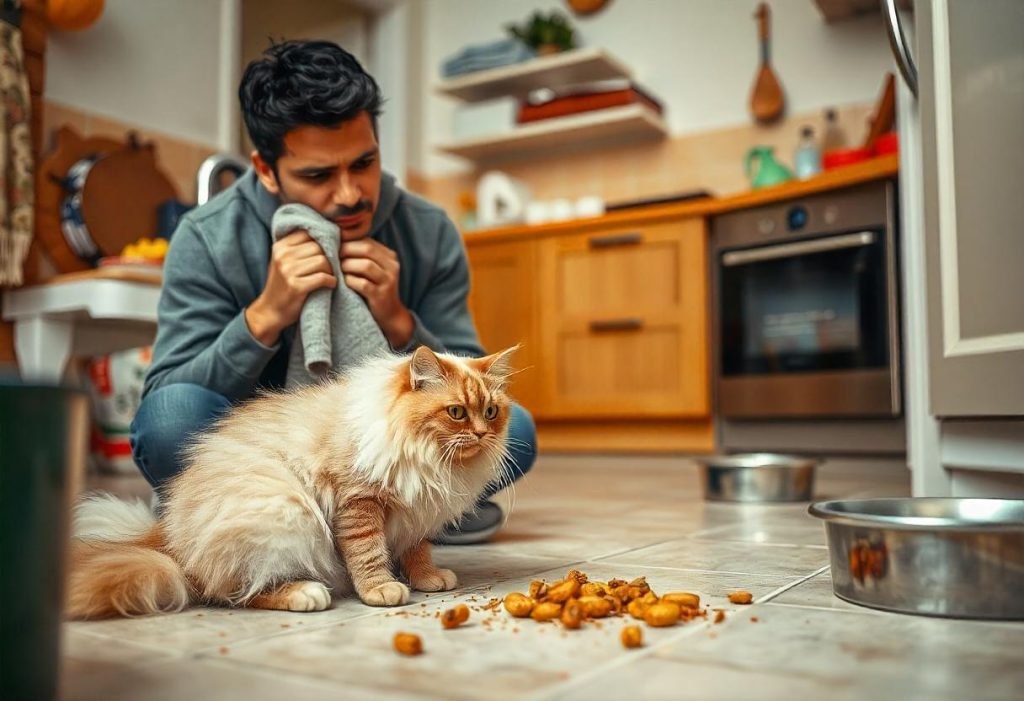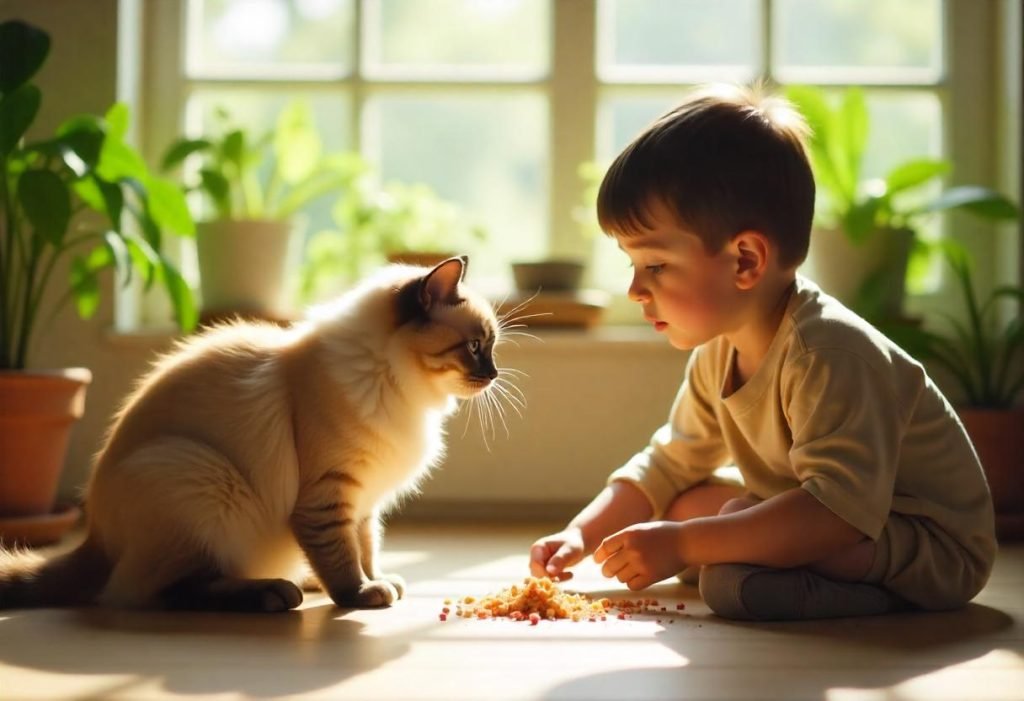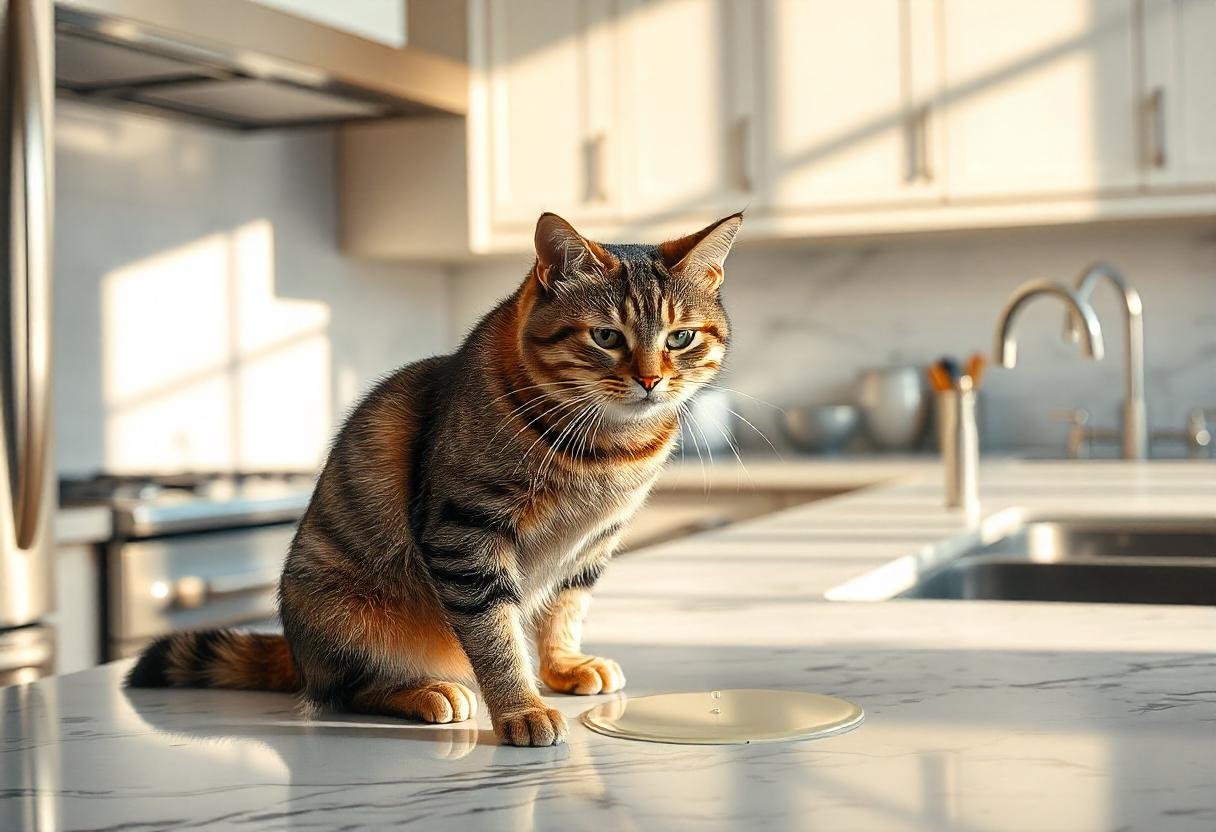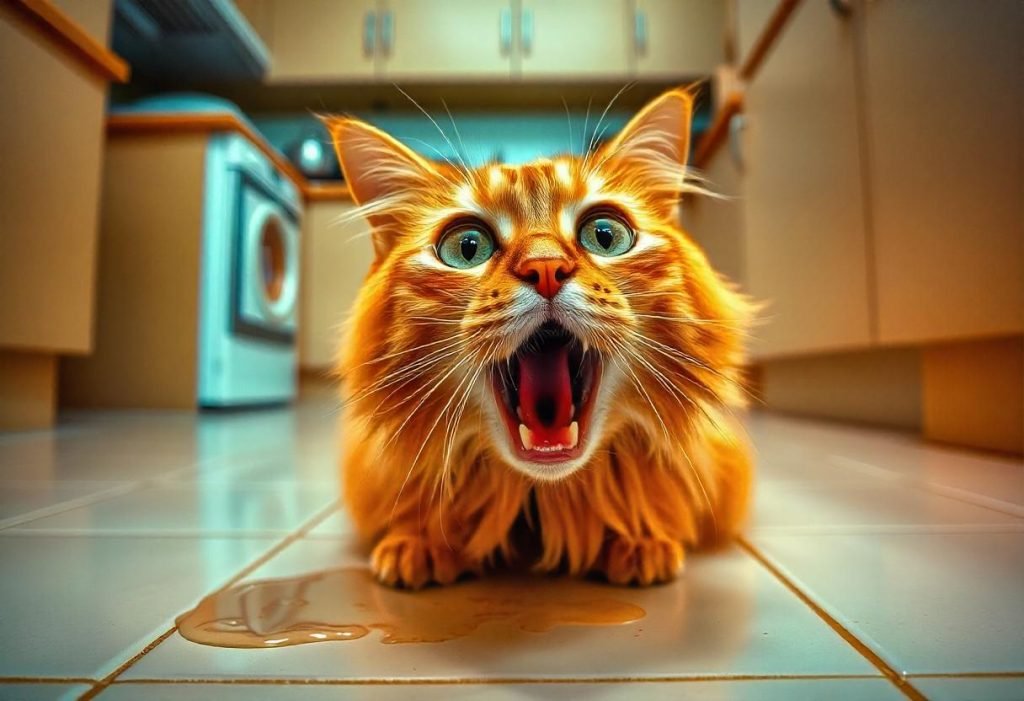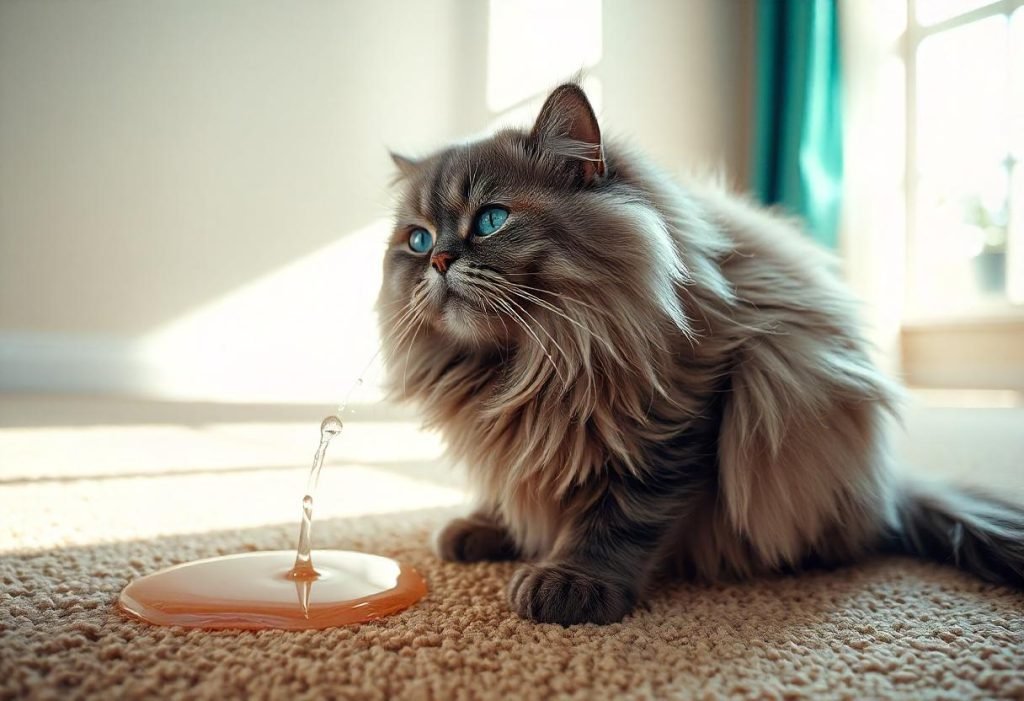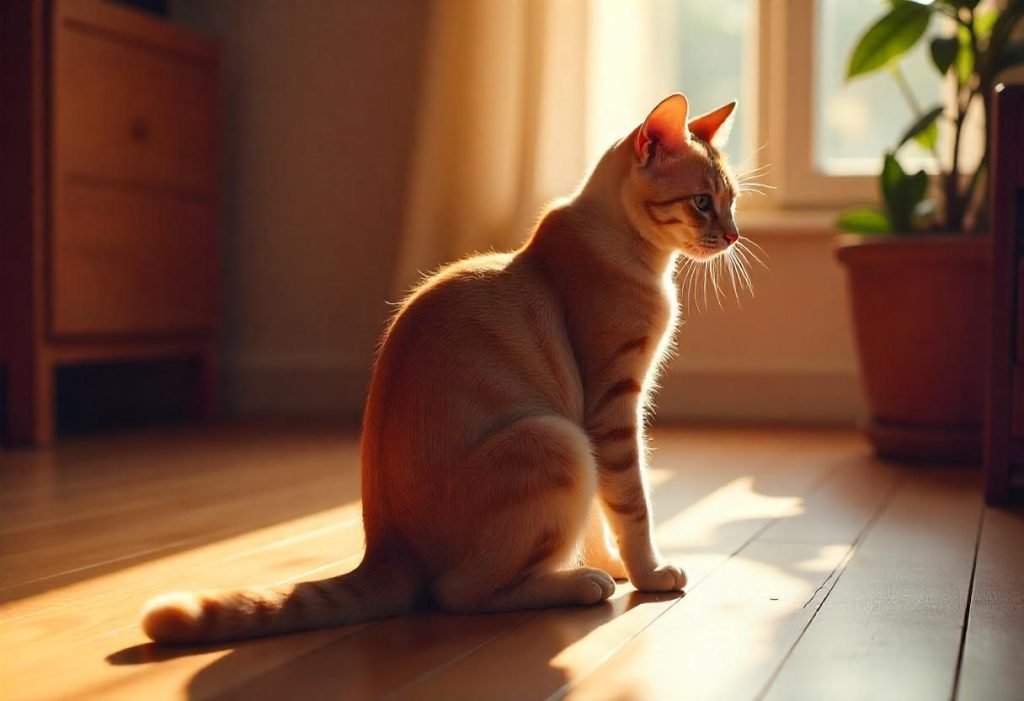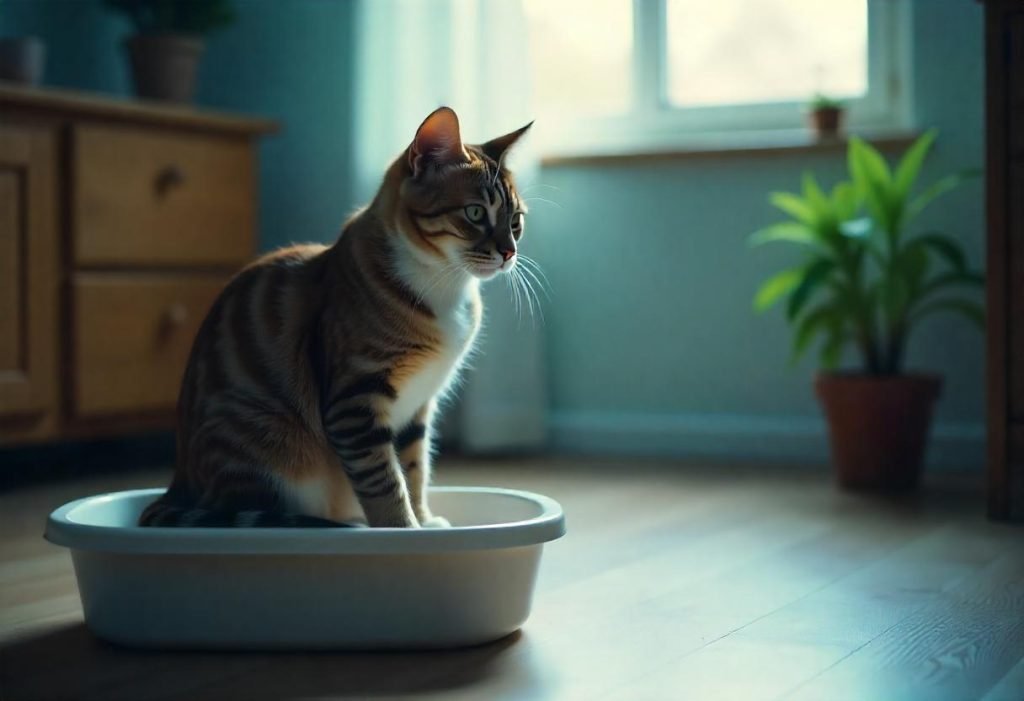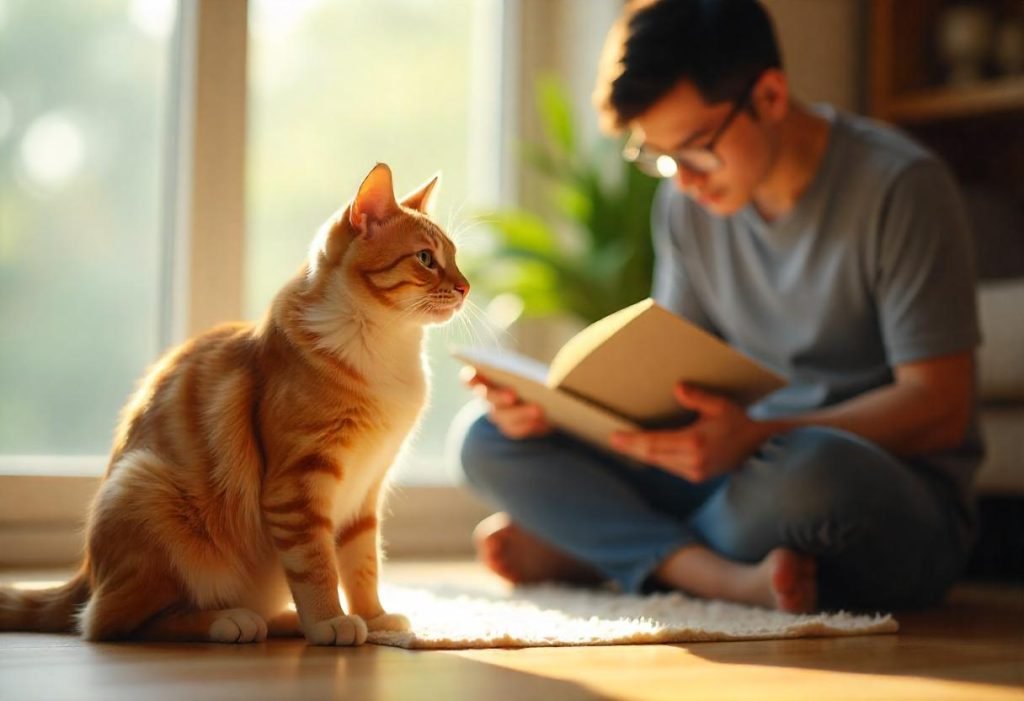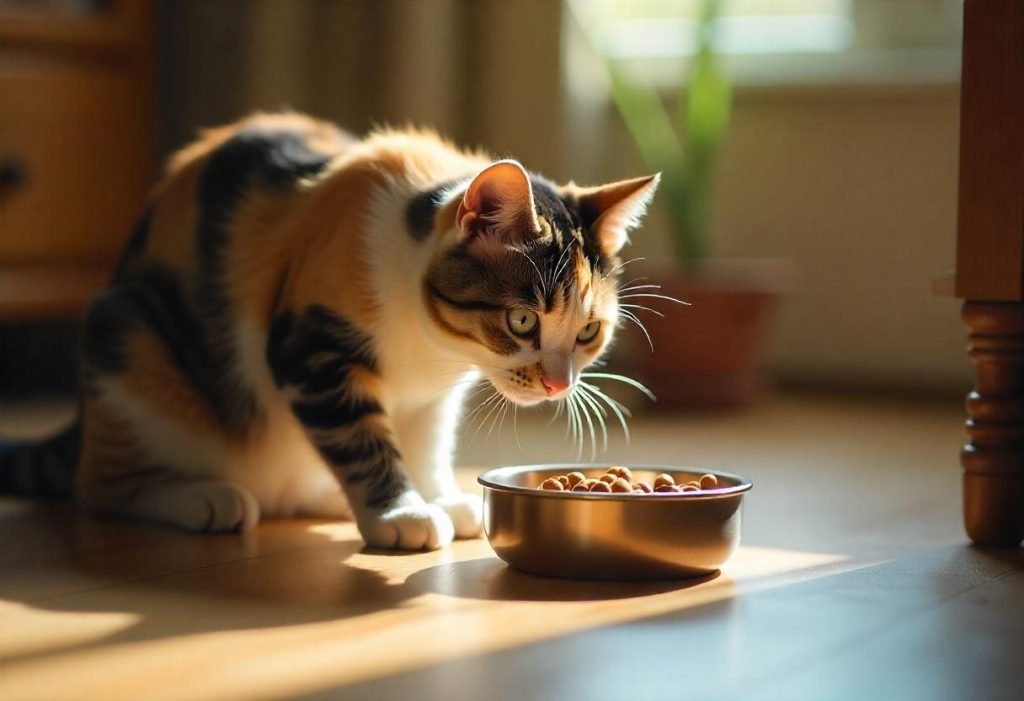Many cat owners seek answer about why is my cat nose dry and cracked; the sight of your cat’s normally smooth, moist nose, suddenly dry and cracked, can be a cause for concern.
It’s like a window into their overall health, revealing a potential issue that needs attention. While a slightly dry nose might be a minor concern, persistent dryness, cracking, or even bleeding can indicate underlying health issues that require a closer look.
This article why is my cat nose dry and cracked; dives into the world of feline nasal health, exploring the diverse range of causes behind a dry and cracked nose, offering insights into potential complications, and guiding you towards effective solutions.
We’ll break down complex medical jargon into easy-to-understand language, using real-life case studies to illustrate the journey towards a happy, healthy, and moist-nosed kitty.
Understanding Feline Nasal Health: A Closer Look
Imagine your nose feeling dry, itchy, and even cracked. This is the experience your cat might be having when their nose is dry and cracked.
A cat’s nose is a sensitive organ, playing a vital role in their sense of smell, temperature regulation, and overall well-being.
A dry and cracked nose can be a sign of various conditions, from simple environmental factors to more serious health issues.
1. Dehydration: A Common Culprit
Dehydration, a lack of sufficient water in the body, can cause a variety of symptoms, including a dry and cracked nose.
- Symptoms: Dry and cracked nose, lethargy, sunken eyes, decreased urination, and possibly constipation.
- Causes: Insufficient water intake, illness, vomiting, diarrhea, and certain medications can lead to dehydration.
- Diagnosis: Based on clinical signs and possibly confirmed with blood tests to assess hydration levels.
- Treatment: Providing fresh water, encouraging water intake, and possibly administering fluids intravenously in severe cases.
Case Study: Charlie’s Dehydration
Charlie, a 4-year-old tabby, had a dry and cracked nose and seemed lethargic. His owner noticed he was drinking less water than usual.
His veterinarian diagnosed mild dehydration and recommended increasing Charlie’s water intake. After a few days of encouraging water consumption, Charlie’s nose became moist again.
2. Environmental Factors: Irritants in the Air
Exposure to harsh environmental factors, like dry air, extreme temperatures, or irritants like smoke and dust, can dry out a cat’s nose.
- Symptoms: Dry and cracked nose, sometimes accompanied by sneezing, coughing, or eye irritation.
- Causes: Dry air, extreme heat or cold, smoke, dust, and certain cleaning products can irritate the nose.
- Diagnosis: Based on the history of environmental exposure.
- Treatment: Humidifiers to add moisture to the air, avoiding irritants, and possibly using a saline nasal spray to moisturize the nose.
Case Study: Lily’s Dry Air
Lily, a 7-year-old Persian, had a dry and cracked nose during winter, when the air in her home was particularly dry.
Her owner used a humidifier to add moisture to the air, and Lily’s nose became moist again.
3. Allergies: Sensitivity to Irritants
Allergies, often triggered by pollen, dust mites, mold, or even certain cleaning products, can cause a variety of symptoms, including a dry and cracked nose.
- Symptoms: Dry and cracked nose, sneezing, coughing, watery eyes, itchy skin, and possibly hair loss.
- Causes: Allergies can be triggered by a variety of substances in the environment.
- Diagnosis: Based on clinical signs and possibly confirmed with allergy testing to identify specific allergens.
- Treatment: Avoiding the allergen, using air purifiers, and possibly administering antihistamines or corticosteroids.
Case Study: Max’s Pollen Allergy
Max, a 9-year-old Siamese, had a dry and cracked nose, sneezing, and watery eyes during spring.
His veterinarian suspected a pollen allergy and recommended using an air purifier and antihistamines. Max’s symptoms improved significantly with these measures.

4. Feline Herpesvirus (FHV): A Viral Infection
FHV, a common virus in cats, can cause a variety of symptoms, including a dry and cracked nose.
- Symptoms: Dry and cracked nose, sneezing, coughing, watery eyes, lethargy, and possibly ulcers in the mouth or on the nose.
- Causes: FHV is a contagious virus that can spread through contact with infected cats or contaminated surfaces.
- Diagnosis: Based on clinical signs and often confirmed with diagnostic tests, like nasal swabs or bloodwork.
- Treatment: Supportive care, including rest, hydration, and sometimes antiviral medication.
Case Study: Oliver’s Feline Herpesvirus (FHV)
Oliver, a 12-year-old tabby, had a dry and cracked nose, sneezing, and lethargy.
His veterinarian diagnosed FHV and recommended supportive care, including rest and hydration. After a week, Oliver’s symptoms subsided.
5. Fungal Infections: A Less Common Culprit
Fungal infections, while less common than other causes, can also cause a dry and cracked nose, along with other symptoms.
- Symptoms: Dry and cracked nose, possibly with a white or yellow discharge, sneezing, coughing, and sometimes lesions on the nose or inside the nose.
- Causes: Fungi, like Aspergillus, can infect the nasal passages and cause inflammation.
- Diagnosis: Cultures of nasal discharge to identify the fungus.
- Treatment: Antifungal medications, often for a prolonged period.
Case Study: Bella’s Fungal Infection
Bella, an 8-year-old Siamese, had a dry and cracked nose, white discharge from her nose, and sneezing.
Her veterinarian suspected a fungal infection and performed a nasal culture, which confirmed an Aspergillus infection.
Bella was treated with antifungal medications for several months.
6. Skin Conditions: Beyond Dryness
Skin conditions, like eczema, can extend to the nose, causing dryness, cracking, and even bleeding.
- Symptoms: Dry and cracked nose, possibly with redness, scabbing, and itching.
- Causes: Eczema, allergies, and other skin conditions can affect the nose.
- Diagnosis: Based on clinical signs and possibly confirmed with a biopsy of the affected area.
- Treatment: Topical medications, like corticosteroids, to reduce inflammation and itching, and possibly antibiotics or antifungal medications to treat infections.
Case Study: Charlie’s Eczema
Charlie, a 6-year-old tabby, had a dry and cracked nose, redness, and scabbing around his nose.
His veterinarian diagnosed eczema and prescribed a corticosteroid ointment to reduce inflammation and itching. Charlie’s nose gradually healed.
7. Pemphigus: An Autoimmune Skin Disease
Pemphigus, a rare autoimmune skin disease, can cause a dry and cracked nose, along with other symptoms like blisters and ulcers.
- Symptoms: Dry and cracked nose, possibly with blisters, ulcers, and hair loss.
- Causes: Pemphigus occurs when the immune system mistakenly attacks healthy skin cells.
- Diagnosis: Based on clinical signs and often confirmed with a biopsy of the affected area.
- Treatment: Immunosuppressive medications to suppress the immune system and corticosteroids to reduce inflammation.
Case Study: Lily’s Pemphigus Diagnosis
Lily, a 4-year-old Persian, had a dry and cracked nose, blisters around her nose, and hair loss.
Her veterinarian diagnosed pemphigus and prescribed immunosuppressive medication. Lily’s condition improved with treatment.

8. Tumors: A Rare but Serious Cause
Tumors, both benign and malignant, can develop on the nose, causing dryness, cracking, and possibly bleeding.
- Symptoms: Dry and cracked nose, possibly with a lump or mass, bleeding, and difficulty breathing.
- Causes: Tumors can arise from different tissues within the nose.
- Diagnosis: Biopsy of the mass to determine the type of tumor.
- Treatment: Surgery to remove the tumor, radiation therapy, or chemotherapy, depending on the type and location of the tumor.
Case Study: Max’s Nasal Tumor
Max, a 9-year-old Siamese, had a dry and cracked nose with a lump on his nose. His veterinarian performed a biopsy, which confirmed a benign nasal tumor.
The tumor was surgically removed, and Max’s nose healed well.
Decoding Your Cat’s Dry and Cracked Nose: Seeking the Source
When you notice your cat with a dry and cracked nose, it’s essential to determine the underlying cause to provide appropriate treatment.
Here’s how to approach the situation:
1. Observation: The Power of Careful Watching
- Dryness severity: Observe the severity of the dryness and cracking, noting if it’s localized to the nose or affecting other areas, and if it’s increasing or decreasing.
- Other symptoms: Look for any other symptoms, like sneezing, coughing, discharge, lethargy, loss of appetite, or skin lesions.
- Environmental factors: Consider any recent changes in your cat’s environment that could be causing dryness or irritation.
2. Veterinary Examination: Seeking Professional Guidance
- Physical examination: Your veterinarian will conduct a thorough physical exam, checking for any signs of illness or injury.
- Nasal examination: Your veterinarian will examine your cat’s nose, looking for dryness, cracking, discharge, lumps, or other abnormalities.
- Diagnostic tests: Depending on the suspected cause, your veterinarian may recommend bloodwork, nasal swabs, a biopsy, or other diagnostic tests.
Treating a Dry and Cracked Nose in Cats: A Tailored Approach
Treating a dry and cracked nose in cats depends on the underlying cause, and your veterinarian will create a personalized treatment plan.
- Hydration: Encourage your cat to drink more water, possibly using a water fountain.
- Humidifier: Use a humidifier to add moisture to the air, especially during dry seasons.
- Saline nasal spray: Apply a saline nasal spray to moisturize the nose.
- Antibiotics: Antibiotics may be prescribed to treat bacterial infections.
- Antifungals: Antifungal medications may be used to treat fungal infections.
- Topical medications: Corticosteroid creams or ointments may be prescribed to reduce inflammation and itching.
- Immunosuppressive medications: Immunosuppressive medications may be used to manage autoimmune disorders.
- Surgery: Surgery may be required to remove tumors or to address other underlying issues.
Preventing a Dry and Cracked Nose in Cats: A Proactive Approach
While some causes of a dry and cracked nose are unavoidable, you can take proactive steps to support your cat’s nasal health and prevent these issues.
- Regular veterinary checkups: Yearly checkups can help identify early signs of illness and prevent complications.
- Environmental control: Keep your cat’s environment clean and free of irritants like dust, pollen, and smoke.
- Humidifier: Use a humidifier during dry seasons or if your home is particularly dry.
- Flea prevention: Maintain a regular flea prevention program to prevent flea allergies and other skin issues.
- Stress management: Create a calm and comfortable environment for your cat, minimizing disruptions and providing enrichment activities.
Conclusion: A Journey Towards a Healthy, Moist-Nosed Kitty
Seeing your cat with a dry and cracked nose can be a cause for concern. Remember, understanding the root cause of your cat’s dry nose is crucial for effective treatment.
By observing your cat carefully, seeking professional help, and implementing appropriate management strategies, you can help your furry friend enjoy a healthy, comfortable, and moist-nosed lifestyle.
Note: This article is for informational purposes only and should not be substituted for professional veterinary advice.
Always consult with your veterinarian for a proper diagnosis and treatment plan for your cat’s specific needs.








